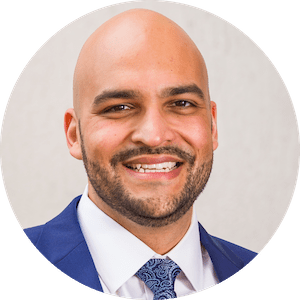This post goes beyond providing 5 benefits of a financial plan. Today’s fast paced world requires complete and current data to make knowledgeable decisions. You can use this list to evaluate the quality of your existing plan or to help create a plan for your future.
- Get Organized
One of the biggest challenges in modern life is the amount of data we consume and how fast it is updated. Take your 401k for example. From this one retirement account you’ll receive quarterly statements, annual plan disclosures, fund disclosures, performance updates and more.
Most people simply throw this information away because they don’t know what it means or what to do with it. However, the data is only valuable once it’s configured to provide information.
For instance, your 401k provides data about:
- How much you’re saving
- How you’re invested
- If you’re receiving an employer matching contribution
- The type of retirement account you’re using (Roth vs Traditional)
However, without proper context that data isn’t really valuable. Ideally, your data should be configured to tell you:
- If you’re saving enough to retire
- When you can retire
- Your investment performance
- Your investment fees
In order to answer the questions above, you need to have better context. Often, this comes from viewing multiple accounts or assumptions in a single model.
Your financial plan will need to include the following to answer the question “Am I saving enough to retire”:
- A list of your financial accounts
- Measure your current balance
- Measure your current contribution rate (including employer match)
- Measure current investment performance (YTD is fine)
- Define when you’d like to retire
- Define a realistic return assumption until retirement
If you’re looking to answer your most important personal finance questions then you need a robust model that factors in your income, investments, taxes, insurance and legacy plans. Without including all of the necessary information in your plan, you’ll have incomplete or inaccurate predictions. The mantra of garbage in, garbage out coudln’t have higher stakes than when it comes to your financial plan. At a minimum, you’ll want to make sure the following documents are added to your financial plan:
- Assets
- Liabilities
- Insurance
- Estate Plan
Once you can see your big picture in a single view, it’s time to review the activity, known as Cash Flow.
- Know your budget
Your cash flow is the amount of money in and out of your accounts. Without a plan that ties in all of your credit card and bank accounts into a single view, it’s hard to get the true picture of your finances.
Your cash flow will allow you to see where your money is going, how much is being spent and what income is coming in. This is different from a budget which is a set limit on expenses by subject. Your budget defines what you should spend and your cash flow shows how your money is actually spent.
You can adjust the view on your cashflow to see it daily, weekly, monthly, quarterly or by year. Looking at your cash flow over different time periods shows what changes are taking place and why.
- Track your net worth
Your net worth is a snapshot of your financial wellbeing. Your Net Worth shows your assets minus your liabilities. This report is helpful for seeing your big picture. Now your account balances by type can be seen on a single screen.
Looking at your Net Worth on a quarterly or annual basis will show if you’re making progress or falling behind financially. A positive Net Worth means that you have more assets than liabilities. A negative net worth means that your debts (liabilities) are greater than your assets. While a negative net worth is common earlier in life, due to student loans and other debt, it should improve over time.
Your Net Worth is the source of truth during annual reviews. If your Net Worth is increasing then you’re making progress, but if you’re
- Model Changes
Once you have added all the necessary information to create your financial plan, you can run simulations or scenarios to visualize the impact of future decisions. Maybe you want to test paying off your home or buying a business. Looking at the changes to your Net Worth and Cash Flow will allow you to see if those are good decisions or not.
If your Net Worth and Cash Flow increase in future years then that could be a good decision. If you have more debt and a smaller cash flow then the decision may not be right. Since any single decision involves multiple factors, you can test each of them separately to see which makes the biggest impact.
For instance, if you’re considering paying off your mortgage then you have to consider the effects of:
Coming up with the money to pay off the mortgage
– Will there be tax consequences?
– How does that impact your asset allocation?
Paying off the mortgage
– How do your taxes change?
– How does your cash flow change?
– Does your asset longevity change?
Alternatives to paying off the mortgage
– Can you get a better return investing the money?
– Is now the right time to pay off the mortgage?
Using a “stress test” on specific choices allows you to see the short and long term impact of potential changes in your financial situation. Being able to see the different outcomes can give you confidence about your decision making. This is really helpful for meaningful decisions like buying or selling a home.
- Get Help
Personal financial management is a difficult task in modern life. The pace of change and the number of moving pieces can be overwhelming. That’s why many people don’t have a budget and place finances as their biggest source of stress. Without a plan showing you where you’re heading you feel out of control. That lack of control can lead to depression and feelings of hopelessness.
However today it’s easy to get financial help. Whether it be questions about your health insurance benefits at work, how to start an education fund or how to pay off debt, you can find help to improve your situation. Tools like, Pocket Plan allow you to connect with licensed professionals who can provide professional tools and advice. Having a coach to help you make big decisions can speed up your results or improve the outcome.





